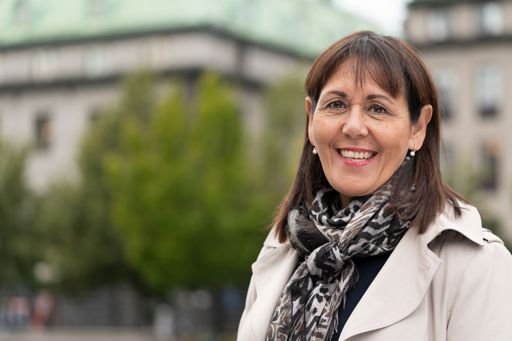By all accounts, the Nordic countries and territories are already highly digitized, highly efficient financial services markets. They are frequently cited as pioneers of digital payments and banking. Their technological capabilities in financial services are among the best in the world. So why are the Nordics now working together to develop a new payment infrastructure?
While people outside of Europe often talk of the Nordic region as one cohesive economic bloc, the reality is that the region is home to around 27 million people, spread across 5 sovereign markets, each with their own financial services infrastructure, currencies and regulators.
Between markets, there is generally a high level of interoperability through standardized use of XML. But the financial services infrastructure and systems are not connected. And, as such, banks and financial services operators in each of the individual markets often struggle to achieve the scale and volumes required to support new investment or to reduce transaction costs.
“Nordic banks know their current systems are advanced, but not fit-for-purpose for a world dominated by real-time payments. Yet they also know it will take significant investment to upgrade them,” explains Paula da Silva, Head of Transaction Services at SEB in Sweden. “By connecting the countries together on a single platform, we can share the development burden, streamline communication and – as a result – lower the cost of transactions for banks and their customers.”
By connecting the countries together on a single platform, we can share the development burden, streamline communication and – as a result – lower the cost of transactions for banks and their customers.
Rising to the challenge
The idea for the world’s first digital platform to support real-time, cross-border payments across the Nordic markets was born in a meeting of bank executives in 2017, noted Ms. da Silva. Frustrated by the barriers that kept transaction costs unnecessarily high between Nordic states, the CEOs of many of the major banks agreed to work together to find a solution.
The P27 initiative (named to reflect the 27 million people it will support) was created with the intention of enabling real-time, batch, domestic and cross-border payments through a secure and versatile platform, quickly and at low cost. Initially developed to allow payments to flow instantly between people and businesses within Denmark, Finland and Sweden, the platform has been designed to expand to the other two Nordic countries in the future.
The entity is a partnership between some of the region’s leading banks – Danske Bank, Handelsbanken, Nordea, OP Financial Group, SEB and Swedbank. Building consensus between the banks has been fairly easy. “We are extremely aligned on the foundations,” noted Ms. da Silva, who also serves as Chairwoman of the P27 initiative. “Alone, none of us have the scale to achieve this kind of innovation. What really unites us is the need to remain competitive against the large global players going forward.”
A catalyst to growth
P27, when fully operationalized, is expected to deliver significant benefits to the region. Simply put, by developing a common Nordic standard for payments, P27 will help its markets facilitate increased trade, growth and employment.
“One of the big things we can do as a banking sector is help enable trade and drive growth for an economy,” added Ms. da Silva. “In transaction services what that means is digitally understanding who you are, who you are transacting with, where the funds are going and what language we should be using to transact. If we can speed that up and reduce the cost, we can help unlock immense value for our customers, our communities and our economies.”
That would allow each of our institutions to really focus on our own development and creating excellent customer journeys and achieving cross-product innovation instead of spending all of our time and resources duplicating infrastructure.
Bringing the customers along
Over the past two and a half years, the team has made great progress. Many of the technological infrastructure challenges have been hammered out and the system’s clearing platform is already open for regional banks and foreign entities, payment service providers and others.
Currently, the organization is working with participating banks to think through the ‘downstream’ implications of the initiative on their clients.
“At SEB, for example, we are spending a lot of our time making sure we are really, really crisp on the migration plan for every single customer and every single agreement,” added Ms. da Silva. “Some of our larger clients are looking to develop a full XML strategy for themselves in order to be able to initiate Nordic payments from anywhere in the world. It’s a giant undertaking.”
Sky is the limit
Looking ahead, the organization expects to expand its breadth of services to include areas such as Anti-Money Laundering (AML) and sanctions monitoring – activities where greater volume of data and deeper visibility into money flows can significantly enhance compliance and oversight. More services may be on the table in the future.
“The sky is really the limit. When you think about all of those areas where banks don’t actually compete but that require significant investment – the opportunities are immense. That would allow each of our institutions to really focus on our own development and creating excellent customer journeys and achieving cross-product innovation instead of spending all of our time and resources duplicating infrastructure.”
Ms. da Silva also sees significant opportunity for savvy service providers who are able to support the banks and their clients as they shift to the new payment infrastructure. ERP vendors, technology integrators, Natural Language Processors, fintechs and others could play an important role in helping create the test environments and ensuring corporates are ready when the migration begins.
This article is featured in Frontiers in Finance – Resilient and relevant
Explore other articles › Subscribe to receive the latest financial services insights directly to your inbox ›
Foundations poured
Ultimately, however, the real benefits of the P27 initiative will be enjoyed in terms of lower transaction costs across the Nordic financial services spectrum. “If we can make it easier for Nordic businesses to grow and cheaper for Nordic customers to conduct transactions, we will have achieved a great thing. And we will have built a solid foundation for the region’s future growth.”

Paula da Silva
Head of Transaction Services, SEB and Chairwoman, P27
Connect with us
- Find office locations kpmg.findOfficeLocations
- kpmg.emailUs
- Social media @ KPMG kpmg.socialMedia







